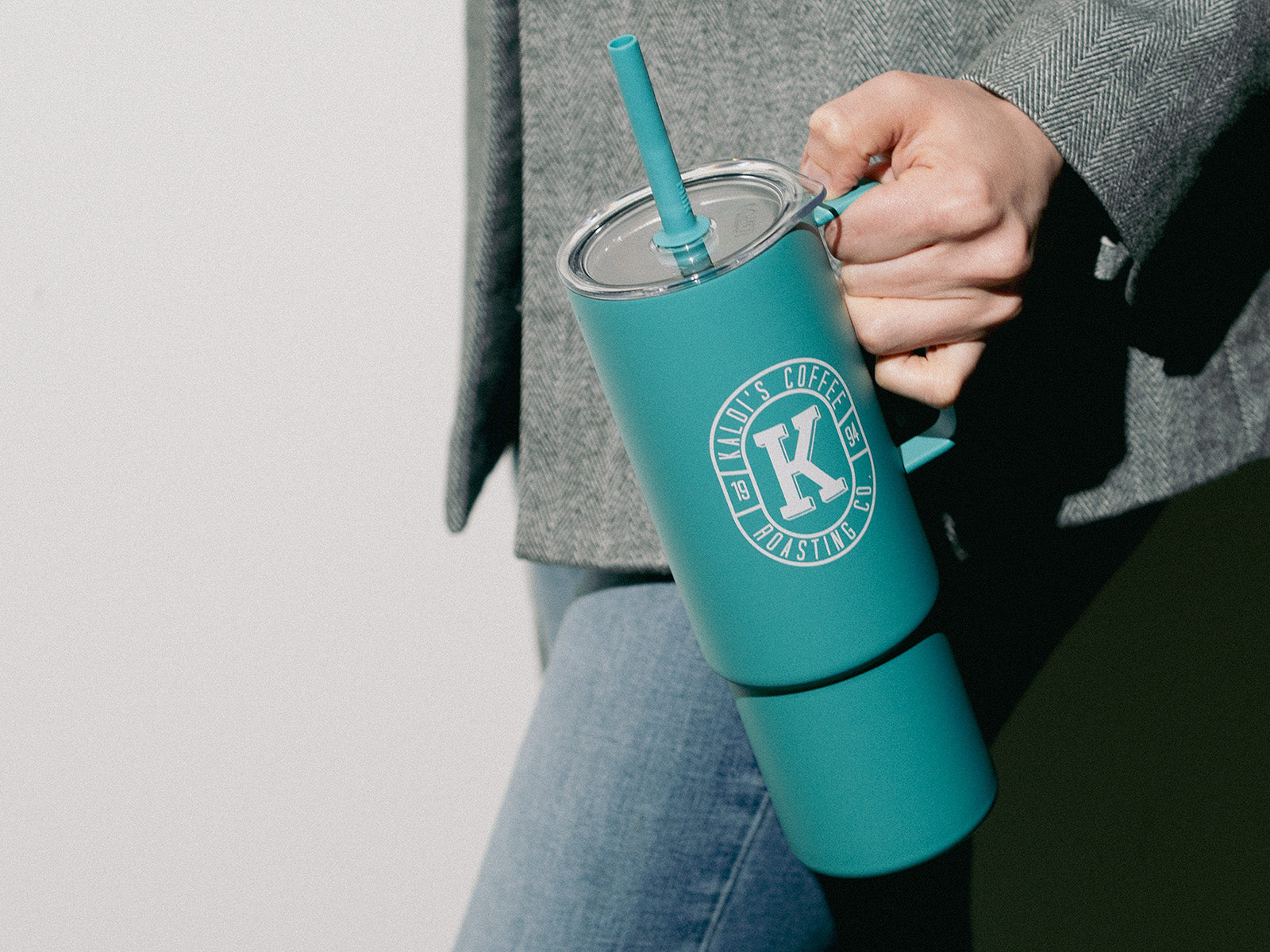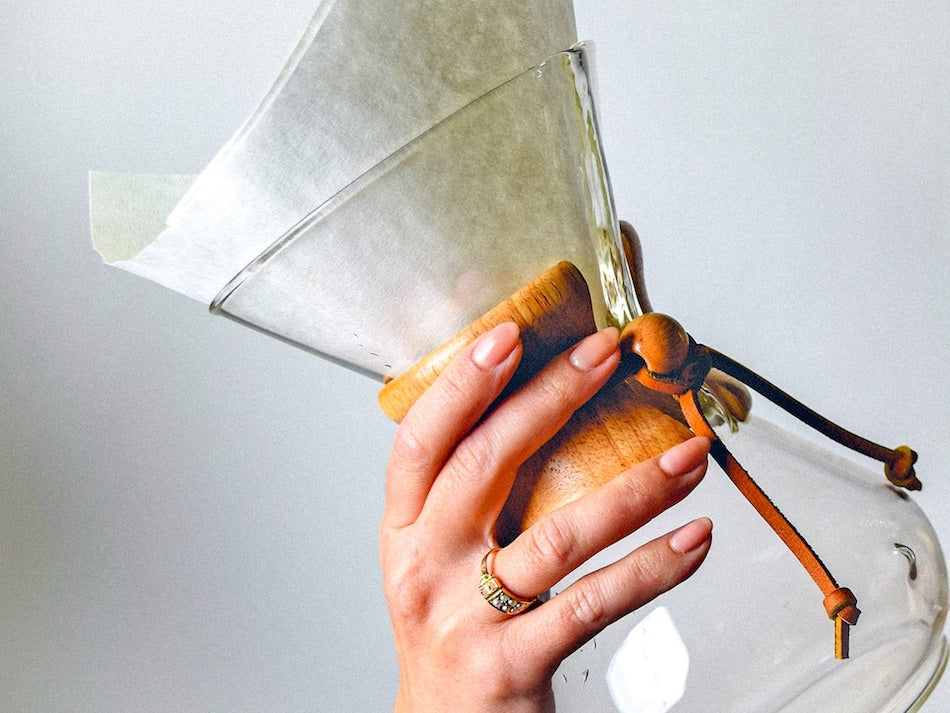Welcome to part three of my La Minita travelogue - If you missed the first or second part of my journey, you can either begin with me in San Jose or join me on the farm at the guest house, or just dive right in here at the mill.
Want an amazing coffee from La Minita? Shop La Minita Melico Geisha.
Below the slopes of coffee, at the base of the mountain, lies La Minita's mill, Beneficio del Rio Tarrazú. What I’m referring to as “the mill” is actually a wet mill, a dry mill, a roasting and cupping lab, along with offices and various other support buildings - a huge operation as you can see!

We visited the mill in the evening and during the day, so forgive the mix of lighting conditions! Multiple stations exist for trucks delivering coffee to unload.

La Minita’s mill also serves smaller farms and estates in the surrounding valleys, so trucks of all sizes come and go throughout the day.

Angerias are used for measurement when loads are delivered to the mill, to make sure the expected quantity is delivered, then dropped into holds - once a truck is fully unloaded, the processing can begin. This processing changes the coffee from fruit-covered cherry into the dried seeds we call beans.

The coffee’s been delivered, so let’s get to the milling! Coffee arrives at the mill as quickly as possible after picking. If processing is delayed, the fruit around the seeds will eventually spoil or ferment, ruining the coffee.

Once the received coffee is measured again and sampled, it drops to a receiving tank filled with water. A full, incredibly detailed description of what happens to the coffee next is available in La Minita’s mill blog. I’ll tell you about my experience of the mill, but the scale, sounds, and sights were awesome and overwhelming - for an expert description of their world-class mill, please head straight to the source.
In the receiving tanks, any low-density “floaters” get channelled away to be processed as lower quality coffee. In the wet mill, the thrum of rushing water and churning machines working away on the coffee dominates any conversation. The coffee needs to be de-stoned to remove any foreign objects that might have been in the bags or the trucks after picking, then de-pulped to remove the skin.

De-pulping requires a few machines, to ensure all the coffee stripped of its skin and fruit, as the size of the cherries varies. The skins get washed away and saved to return to the farm, where they’ll serve as natural fertilizer.

If coffee makes it through the series of machines designed for de-pulping without being de-pulped, it gets sorted away from the highest quality beans into what are called "seconds" and "thirds" - this coffee’s still great, we got to taste it on the cupping table - but is naturally lower quality than the best coffee of "firsts."

After de-pulping is complete, the coffee gets washed through another channel to the fermentation tanks. These large holding tanks lie between the receiving area and the dry mill.

Here, the coffee begins to ferment under controlled conditions, naturally breaking down the sugars that hold the remaining inner fruit, known as endocarp or mucilage, onto the seeds. The amount of time it rests varies, and is determined by the mill manager’s examination and judgement of each tank.

Once the coffee is ready, it's washed again in cold water, which stops the breakdown of sugars and washes the loosened mucilage away. This washing happens in an inclined channel with gates at different locations along the incline. This design sorts the coffee by gravity, as the lightest beans of lower quality travel quickly and the denser, more flavor-packed beans move slowly down the channel.

Pura Vida

In an amazing display of the Costa Rican ethic of caring for their biosphere, all of the wastewater for these processes is cleaned and returned to a proper ph in a hydro-electric powered water treatment plant. This is extremely rare globally - acidic, untreated water is commonly dumped downstream of farms after milling - and was a huge reminder of La Minita’s willingness to invest in the care of their neighbors and the surrounding lands, not just in their farm. On the farm we saw areas left uncultivated and wild, care for and protection of bees, native planting, but this treatment plant is a shining example of La Minita's dedication to preserving the environment.
Time to Dry
As coffee leaves the wet mill, it’s time to dry the coffee to the proper moisture level for hulling and transport - and here, we saw La Minita use a variety of techniques.

Traditional patio drying was on display, where beans are spread on a concrete patio and regularly raked to dry evenly in the sun.

We saw raised beds throughout the mill, designed for drying special, small lots of coffee, in a traditional African technique.

Finally, most of the coffee processed at the mill travels through huge, low temp, rotating dryers, powered by state-of-the-art, parchment burning furnaces.

Parchment is the innermost layer of skin that wraps around the seeds, and the coffee is pulled from these massive rotating dryer drums when the parchment feels ready for removal.

After drying, the coffee enters a period of reposa, or rest - it rests for a minimum of 20 days. For large lots, this takes place in massive silos. After this period of rest, it’s time for the dry mill to swing into action - the coffee is hulled to remove the parchment and silver skin, then sorted.

La Minita uses as many methods as possible and says they're always looking for more ways to sort for quality - we saw density beds that vibrate (winnowers) to sort the beans, size screeners adapted to work for coffee, and air density sorters.

Moisture readings are taken from samples throughout the process.

The final step is perhaps the most traditional, but also demonstrates La Minita’s respect and commitment to producing world class coffee.

A team of women sit at hand cleaning tables, inspecting coffee for discoloration, damage, and defects that weren’t detected by all of the machines that preceded them.

The process is so meticulous that the top sorters typically top out at 50 pounds per day.
The mill, nestled beside the convergence of the Tarrazú and the Candelaria rivers, really does stand as a final testament to the estate’s commitment to quality and close care for their people, land, neighbors, and of course, their coffee.

All of the processes, sorting, and work, winnows away lower quality beans until only the very best remain.

La Minita estimates that of every 100 pounds of green that arrives at the mill, only 23 pounds of coffee leaves bearing the name La Minita - the rest is graded, then sold under lesser marks.
At the Cupping Table

As a coffee roaster in the United States of America, it’s not necessary to travel the globe in search of coffee, it's not necessary to witness the care and work that go into every bag of coffee we receive- importers are always happy to ship samples to us. There are many reasons, however, that it’s incredibly valuable to visit estates, farms, and mills in coffee-producing countries.

The first might be obvious - if you’re at a farm during harvest, tasting sample roasts the day they become available, you often have the inside track on negotiating to buy it, simply because you got to taste the coffee before anyone else.

The next reason might be less obvious - when we make a commitment to relationship coffees, it’s not based on pamphlets we’re receiving. Instead, we’ve visited the farm, we’ve seen their commitment to quality, to their environment, to their farmers, to all of our shared values, and we’re committed to buying not just their best coffees, but enough of a variety of their coffees, repeatedly, harvest after harvest, so that they know they can depend on us over the years, just like we depend on them.

Standing at an open air cupping table beside the roasting lab, surrounded by a panel of experts from La Minita- roasters, mill workers, quality control managers, the farm manager, the guest house manager, all our hosts - it was clear that everything La Minita prides itself on is embodied in their people. Their work, dedication, planning, improvisation, care, and joy were all on display around the table.

They created three cuppings for us, letting us taste a range of varieties, farms, processes, drying methods, all three quality grades, and more. Everything they do so well was openly shared - with time for questions, debate, joy, and pura vida .

And as in all of our visits to La Minita, it was apparent at that table why our green-buyer, Bob Benck, has returned, decade after decade, to the people and coffee of La Minita, from his desk at Dancing Goats.

We’re proud to offer Costa Rica La Minita to you this year and we’re proud to count it as a relationship coffee that we can now share with an even larger group of coffee lovers.

I’m also thrilled that we’ve chosen to bring you a rare, prized, and incredibly delicious Geisha variety by way of La Minita: Finca El Melico. Thanks for reading about my trip, sharing some of the beautiful sights of Costa Rica with me, and I hope you love the coffee from La Minita as much as I do. Until next time, pura vida mae! -Aaron







